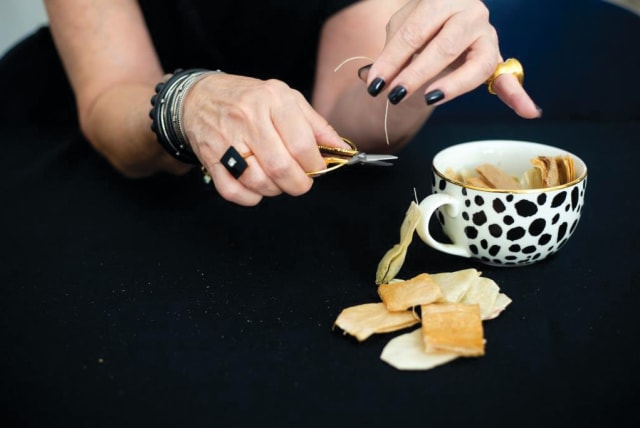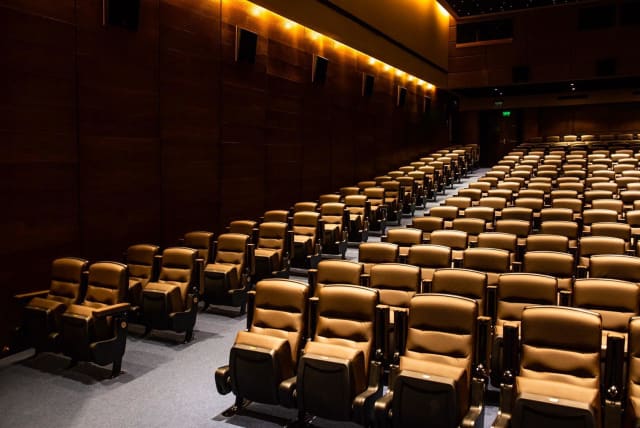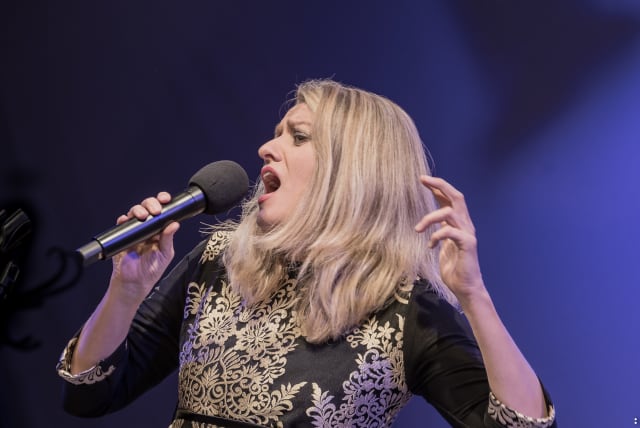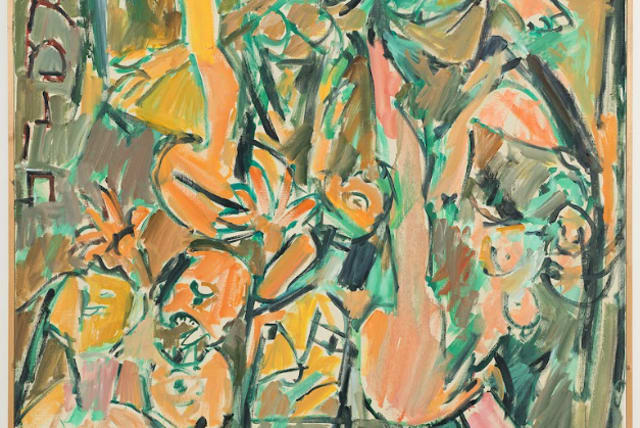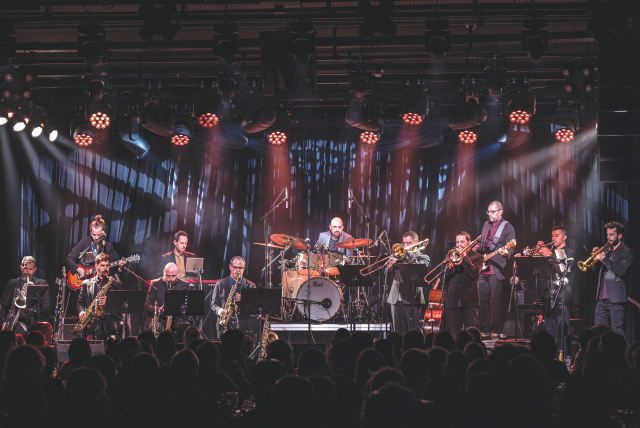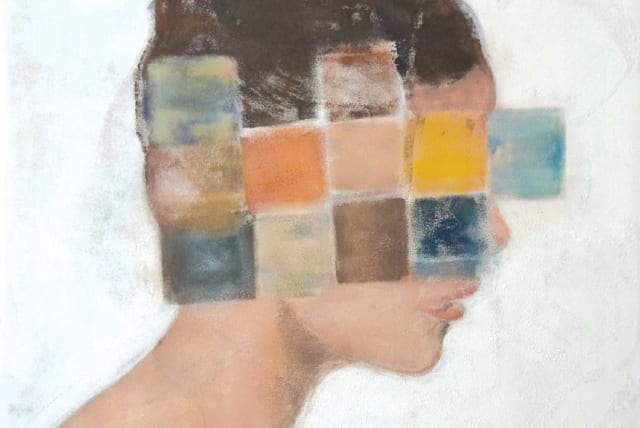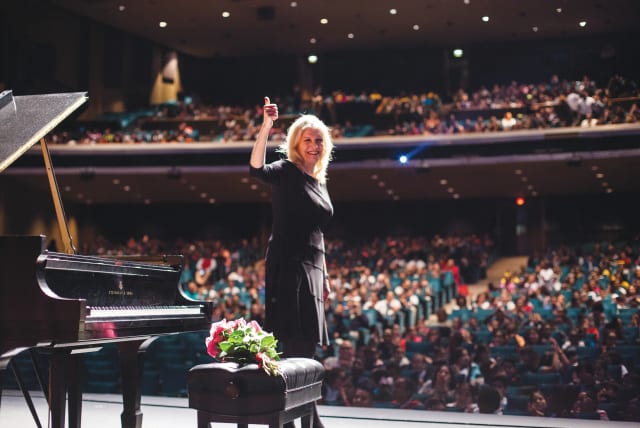The solo exhibition of multidisciplinary artist Debbie Oshrat, being held during International Women’s Month in March in Bat Yam, deals with various aspects of her life as a woman. Oshrat is a renaissance of culture, of aesthetics, of overwhelming beauty, and attention to smallest details. She is a classic, and she conducts an intimate feminine and private conversation with every viewer of her artworks.
The works in “Pictures from a Woman’s Life” reflect the artist’s voyage during her life as far as dealing with femininity, specifically the complexity between intimacy and loneliness. Transitions and connections between the needle that wounds the fabric and its “cleanliness” produce a complex system that is based on inherent dependence on various materials used, which strive for independence but merge into a complete collage.
Through careful coloring, she creates a delicate play between the world of fashion and the non-glamorous world of difficulty and struggle. Sometimes the embroidery appears as a surface of color, and sometimes it is there as an implicit color drawing saturated with movement. A superposition of backgrounds in “natural” colors are united by a thread that sometimes tells a story and evokes a memory. She investigates materials and brings them into symbolic products: Oshrat has always chosen the genesis of her femininity and its meaning.
The genesis of femininity
She embroiders stories in tea, draws, renders, paints, and embroiders on used tea bags (Ready Made, recycling and sustainability). In her own words: “This is how I manage to revive old material and connect small details into a greater whole, which is bigger than the sum of its parts.
“I embroider my life path, correspond with the craft world, with ancient female crafts, that echo the language of the ‘Great Mother.’ This is how I give birth and create my new contemporary and actual art.”
Her artworks convey a kind of longing, innocence, and an invitation to introspection, a spotlight on mystery, a secret that needs to be figured out, something that requires self-searching.
The process of formation of life and birth is also given a place in this exhibition. She says. “It is an important component of my life as a woman...physically when giving birth to children, and spiritually when discovering myself, ’give birth to myself,’ and face the inner and outer reality every time anew.”
As a Reiki master, she combines her knowledge and connects it to her art: “As women, we touch many people. We know our palm is a kind of sensor. Whether in a hug or a pat or just a touch on the shoulder, we take a reading of the person we touch. If we are connected in any way to La Que Sabe, we know what another human feels by sensing them with our palm. For some, information in a form of images and sometimes even words come to them, informing them of the feeling state of others. One might say there is a form of radar in the hands. Hands are not only receivers but also transmitters...This is women’s knowledge through the centuries, handed down from mother to daughter” (Women Who Run with the Wolves – Myths and Stories of the Wild Woman Archetype, by Clarissa Pincola Estes).
Some artworks presented in the exhibition were created following a painful personal experience. Oshrat bravely reveals the life story of her daughter who suffers from post-trauma due to mental abuse she experienced from her commanding officer during her military National Service.
Artworks were created following poems, letters, and sentences from her daughter’s personal diary and were processed into pieces of art.
“The voice is the daughter’s voice, and the hands are the hands of the mother.”
A unique artwork presented is a kind of a blanket intended to wrap and embrace Noga with energies of love and warmth from everyone whose heart was touched by her story and shared a text, a symbol, or a drawing that were used to assemble a large quilt over three meters long.
Symbols of dresses presented in the exhibition are used as a cover for beautiful and better days and as an aid to exit from an “inside snailing” into the outside world. “I see life as a combination of both and both... both pain and joy, both bitter and sweet,” Oshrat says. “To me, a dress symbolizes something feminine, soft, positive, beautiful, and liberating.
As part of the theme “Growing Wings and Flying Free,” Oshrat expresses her longing to rise above the difficulties and complexities of everyday life... to break free and fly away.■
The writer is curator of ‘Pictures from a Woman’s Life,’ a solo exhibition of artist Debbie Oshrat, at the Design Terminal, 32 Ehud Kinnamon Street, Bat Yam.


